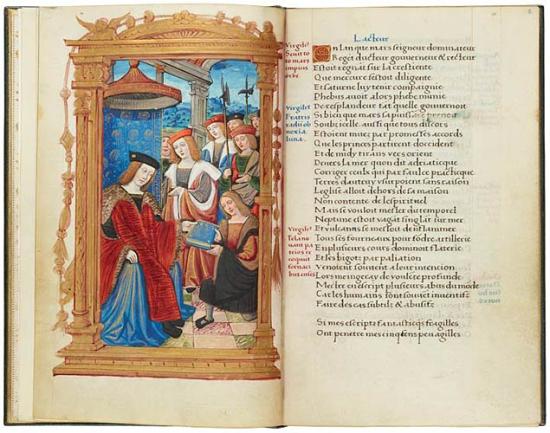
Abuses of the World, in French
Purchased by Pierpont Morgan, 1899
The frontispiece to this copy of Gringore's Les abus du monde, a poem that satirizes all classes of mankind, shows the author presenting a copy of his work to King Louis XII. The seated monarch, the kneeling author, and the courtier standing behind them all wear the loose bulky gown, with a huge collar and open sleeves, that is typical of this period. Even as some Italian influence on French clothing can be seen during this first decade of the sixteenth century, men's fashion in this twilight period was dominated by these large, unflattering garments.
Twilight of the Middle Ages
This was a period of transition in northern Europe—the Middle Ages were not yet over, and the Renaissance had not yet begun. Both King Charles VIII and Louis XII invaded Italy, and these military campaigns exposed France to Italian art, culture, and fashion. At the same time, the Late Gothic style still dominated the arts—and clothing—of northern Europe. Fashions of this period reflect these conflicts.
In the 1480s, the look for men changed abruptly. Padded shoulders and the V-shaped silhouette disappeared. Long loose open gowns came into style and, by the 1490s, these gowns became especially voluminous and bulky. Round-toed shoes replaced the pointy pouleines. New, however, and probably reflecting Italian influence, were the man's outer coat called a sayon, the man's hat called a carmignolle, and doublets with slit sleeves through which the linen of the shirt protruded.
Women's gowns of this period also became fuller, and bombard sleeves were revived. The neck got square. The turret disappeared, while its frontlet remained, now attached to a new small-crowned coif.
